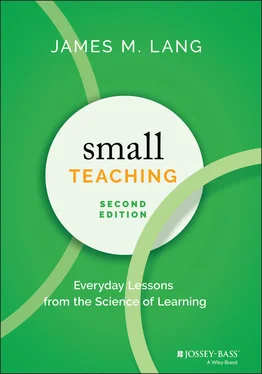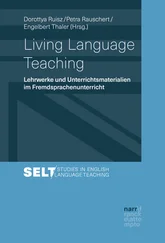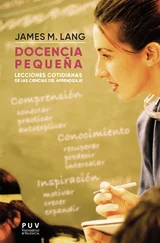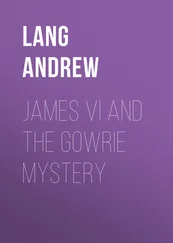To ensure that these techniques lent themselves to this kind of universal accessibility, and thus merit space beneath the umbrella of small teaching, the principles outlined in this book had to meet three basic criteria. First, they had to have some foundation in the learning sciences. Fortunately, over the past decade or two a cohort of learning scientists has begun to present findings from those disciplines in forms that are accessible to non-specialists like me. Books like Daniel Schacter's The Seven Sins of Memory ; Daniel Willingham's Why Don't Students Like School ; or Peter Brown, Henry Roediger, and Mark McDaniel's Make It Stick describe the results of research in neuroscience and cognitive theory in ways that spell out their implications clearly for teachers and learners. Since the publication of the first edition of the book, the roster of such books has only continued to expand. Notable recent titles include Patrice M. Bain and Pooja K. Agarwal's Powerful Teaching: Unleash the Science of Learning ; Yana Weinstein, Megan Sumeracki, and Oliver Caviglioli's Understanding How We Learn: A Visual Guide ; and Joshua R. Eyler's How Humans Learn: The Science and Stories Behind Effective College Teaching . All of these authors helped me identify prospective principles for the first edition of the book, and consider some new ones for this second edition.
The principles I selected almost all have solid support from experimental research of one kind or another; they emerge from the labs of neuroscientists, biologists, and psychologists. But in order for a principle to earn a spot as one of the book's chapter titles, it had to meet a second criteria: there had to be at least some research demonstrating that it could have a positive impact outside of the laboratory, in real-world educational environments—higher education–whenever possible. In other words, I had to see published accounts of experiments or qualitative research that demonstrated that this principle could make a demonstrable positive difference to student learning, performance, retention, or well-being. This test proved the most challenging one to meet; some strategies that seemed plausible to me, or that stemmed from fascinating laboratory experiments, did not ultimately make it into the book since they could not clear this essential hurdle.
Finally, I had to observe the principles directly myself somehow, either from my own experiences as a teacher or learner or from direct observation of other teaching and learning environments. Call me overly cautious, but I needed these principles to pass this final smell test for me to be absolutely certain that I could recommend them to working instructors. Most of the chapters that follow begin with an example of how I have sniffed out these principles in some learning experience from my own life or from the lives of my students or even my children, and I hope these personal examples might help you identify moments in which you have seen them at work in your own learning histories as well.
Assuming a teaching and learning activity met all three of these criteria, it still had to be capable of implementation in ways that fell under the umbrella of small teaching. As you will find in the pages that follow, a small teaching approach or activity may take one of three forms:
Brief (5–10-minute) classroom or online learning activities.I love the idea of small interventions in a learning session that can capture (or recapture) the attention of students, provide quick opportunities for student engagement, and introduce or seal up new learning. Even when you have an otherwise busy class session planned, you can find time for a five-minute activity that will provide a substantive boost to the learning of your students.
One-time interventions in a course.As in the case of the Minute Thesis exercise in Chapter Four, the meaning of small will occasionally shift from “a small portion of a class” to “a small portion of the course.” In other words, some small teaching activities could occupy an entire class period but need to do so only one or two times in the semester.
Small modifications in course design or communication with your students.These recommendations might not translate directly into 10-minute or one-time activities, but they also do not require radical rethinking of your courses. They might inspire tweaks or small changes in the way you organize the daily schedule of your course, write your course description or assignment sheets, or respond to the writing of your students. The strategies in Part IIIespecially will fit under this category of small teaching approaches.
An essential shared quality of all three of these forms of small teaching is that they require minimal preparation and grading . Although we are all busy, this feature of small teaching strikes me as especially important for adjunct instructors, who may be teaching multiple courses on different campuses or working additional jobs to make ends meet. An adjunct instructor who can walk into class every day with a variety of small teaching exercises can actually reduce overall preparation time by seeding these powerful learning activities throughout her teaching. One-time activities like the Minute Thesis or a mindful practice session, which likewise require minimal preparation or grading, can also serve as a back pocket technique that an instructor could use on a day when a sick child or medical emergency or mental health day has reduced or eliminated normal preparation time.
Yet such activities, which may first find their way into your classroom as a means of filling an empty 10 minutes at the end of class or an unplanned course session, have the power to produce as much or more learning than your anxiously overprepared lecture. For me, this represents the real power and promise of small teaching. I hope the chapters that follow will demonstrate to you that small teaching is not a realist's compromise, an inferior choice we have to make because we don't have the time or energy to make the big changes that would really make a difference to our students. We have excellent evidence for the learning power of small teaching activities—in study after study–as you will see in the chapters that follow. Small teaching activities have been proven to raise student performance on learning tasks by the equivalent of a full letter grade or higher. That's powerful evidence—as powerful as anything I have seen in the learning research, including in studies devoted to grand slam approaches that grab the headlines of the Chronicle of Higher Education or other publications of our profession.
In further service to the argument that small and incremental approaches can have great power (and to the fact that we are all busy), you will find a variety of levels at which you can understand the small teaching strategies recommended in each chapter. You will have the richest understanding of any given small teaching approach by reading the chapter in its entirety, of course, but you can also drop into the practical application sections in the latter half of the chapters if you are looking for fast and immediate help. The structure of each chapter includes the following elements:
Introduction: You will usually find here examples of how the particular learning phenomenon described in that chapter might appear in everyday life.
In Theory: This section delves into the research that supports the recommendations of the chapter and includes descriptions of experiments from laboratories and classrooms as well as brief descriptions of key findings or principles from the cognitive sciences.
Models: Four or five detailed models are described in each chapter—fully fleshed-out examples of how instructors could incorporate a small teaching approach into their course design, classroom or online practice, or communication with students. This second edition contains a number of new models that I have encountered since the book's initial publication.
Читать дальше












